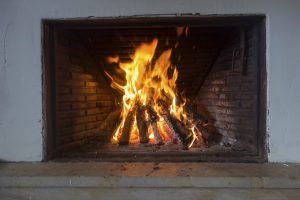Chimney Lining – Inglenooks
Chimney Lining
Chimney lining. Now there’s a subject to thrill you to the core. Who has not wondered at the mysteries and excitement lurking in the heart of their chimneys? Well wonder no more as we bring you a glittering exposé of all things to do with chimney liners and chimney lining. Persons of a nervous disposition, or small children should be accompanied by a responsible adult as we step back through time, as a chronological approach makes sense.
Kidding aside, if this article causes concerns in your mind, and you recognise some of the problems mentioned, get a chimney sweep in, and do make sure he is a certified chimney sweep. He will be best placed to advise you.
Part 1. Inglenooks
First up are the large old chimneys, often known as inglenooks. They are often made with claybat an East Anglian expression for mud. Or clay. This was made into large blocks, with the odd inclusion, and held together with more clay as mortar. Least you mock and deride this, I would point out that I had the job once of demolishing a small building made of this, and it was a very difficult job indeed. Where a brick wall shatters under the sledgehammer, claybat just shrugs. This is why when it comes to chimney lining problems, inglenooks seldom suffer from them.
Clay Lined
They were lined with more clay, and this was often reinforced by mixing in horse or cow hair. Again, many will sneer at this old fashioned nonsense, but these chimneys are still going strong where more modern ones are falling apart.
Inglenook Problems
They do have their problems though. They were designed for a very narrow set of conditions, the houses were very draughty, and allowed in an amount of air, and the idea was to have a comparably small, smoky fire, and hang meat joints inside the chimney where the warm smoke would cure the meat. Modern occupants tend to draught proof the house, and then wonder why the fire smokes so massively. The commonest cure is to put in a register plate and a metal hood, but the maths for calculating the hood size are slightly counterintuitive, and they don’t work. We call it the TARDIS problem where as far as the fire is concerned, the hood is actually bigger than the fireplace it is in.
Leaving that aside, the only real problem with these ancient inglenook liners is that from time to time, lumps of the old liner fall off. However this is of minor concern, because the underlying material is fire and acid proof.
A more serious problem with these chimneys is that they rob huge amounts of warm air from the house and spray it into the Great Outdoors. This of course is fairly easily rectifiable, by installing a wood burning stove and getting the chimney liner replaced and relined (look out for the later parts of this article re the more modern chimney liners that can be retrofitted to old chimneys.) If you wince at the installation cost of a wood burning stove, remember this; the difference in heat loss, and the magical effect that this course of action will have on your fuel bill has to be seen to be believed. In all the relining jobs we have seen, a wood burning stove fitted correctly to an inglenook fireplace will be the fastest amortising combination that there is.
To recap
1. Inglenooks are practically bullet proof
2. Most problems with inglenook fireplaces are caused by alterations that work contrary to the way they were designed
3. The best way to give you the fire you want without facing bankruptcy is to install a wood burning stove and a chimney liner
4. Consult a certified sweep. Not only are they excellent sweeps who have demonstrated competence to a nationally recognised standard, they have a good knowledge base in these matters.
Check out our articles in this Chimney Lining series:
- Chimney Lining – Inglenooks
- Chimney Lining – Georgian Chimneys
- Chimneys and their liners – the Victorian Era
- Chimney Lining – Victorian Chimneys
- Chimney Lining – Acid Attack
- Chimneys – Modern Design
- Chimney Liner – Lining a Chimney
For more advice, or to book a chimney sweeping appointment please call us on 01223 964305 or email us at bookings@ablewightchimneyservices.co.uk
For further advice or assistance, contact our team today